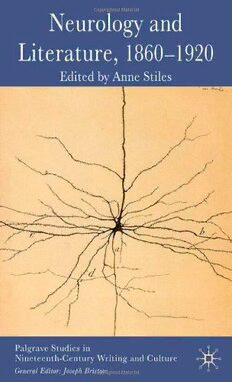
Neurology and Literature, 1860-1920 (Palgrave Studies in Nineteenth-Century Writing and Culture) PDF
240 Pages·2007·1.694 MB·English
Most books are stored in the elastic cloud where traffic is expensive. For this reason, we have a limit on daily download.
Preview Neurology and Literature, 1860-1920 (Palgrave Studies in Nineteenth-Century Writing and Culture)
Description:
The essays in this collection demonstrate how late-Victorian and Edwardian neurology and fiction shared common philosophical concerns and rhetorical strategies. Between 1860 and 1920, neurologists like Silas Weir Mitchell and Oliver Wendell Holmes wrote moving literature, while novelists like H.G. Wells and Wilkie Collins used fiction to dramatize neurological discoveries and their consequences. These six decades witnessed unprecedented interdisciplinary collaboration between scientists and artists, who found common ground in their shared ambivalence towards the prevailing intellectual climate of biological determinism.
See more
The list of books you might like
Most books are stored in the elastic cloud where traffic is expensive. For this reason, we have a limit on daily download.
